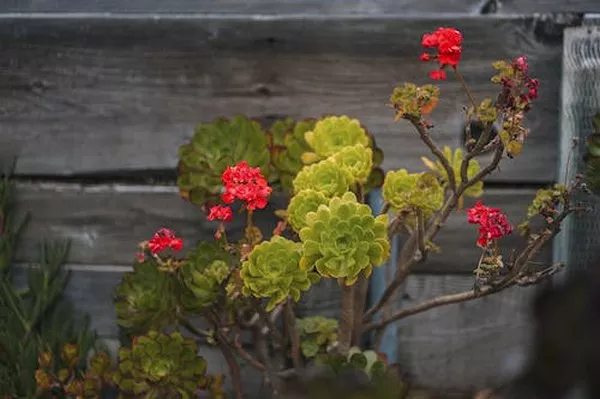Creating a serene and picturesque pond in your backyard can be a fulfilling endeavor, and the right selection and proper planting of pond plants are crucial to its success. Whether you are a seasoned gardener or a novice enthusiast, this comprehensive guide will equip you with the knowledge and techniques needed to plant pond plants like a professional. From selecting the right species to understanding the planting process, we will cover all aspects of cultivating a thriving aquatic garden that enhances the beauty and biodiversity of your pond.
Preparing Your Pond for Planting
Before diving into planting pond plants, it is essential to prepare your pond to provide a conducive environment for their growth. Start by clearing any debris or unwanted vegetation from the pond to ensure that the plants receive ample sunlight and nutrients. Consider investing in a pond liner or using a natural clay substrate to maintain the pond’s water levels and prevent soil erosion. Additionally, make sure the water quality is suitable for aquatic plants by testing pH levels and ensuring proper aeration.
Selecting the Right Pond Plants
Choosing the right pond plants is crucial for maintaining a balanced ecosystem and ensuring the health of your pond. There are three main types of pond plants: submerged, floating, and marginal. Submerged plants, like Anacharis and Hornwort, grow underwater, providing oxygen and shelter for aquatic life. Floating plants, such as Water Lilies and Water Hyacinths, float on the water’s surface, providing shade and reducing algae growth. Marginal plants, like Cattails and Water Iris, grow along the pond’s edge, adding aesthetic appeal and preventing soil erosion.
When selecting pond plants, consider factors such as the pond’s size, water depth, and local climate conditions. Choose a variety of plants to create a diverse ecosystem and cater to different wildlife. Research and consult with local gardening experts or aquatic specialists to ensure that your chosen plants are suitable for your specific pond conditions.
Potting Pond Plants
Potting pond plants properly is essential for their growth and containment. Use specialized aquatic plant pots made of mesh or perforated materials that allow water and nutrients to flow freely while preventing the soil from spilling into the pond. Fill the pots with a suitable aquatic planting medium, such as a mix of clay, aquatic compost, and gravel. This medium provides essential nutrients while anchoring the plant securely.
Gently remove the plants from their nursery containers, and trim any damaged or excess roots. Place the plants into the prepared pots, ensuring that the roots are well-spread and not overcrowded. Add more planting medium if needed, and top with a layer of gravel to prevent it from floating away.
Planting Submerged Pond Plants
Submerged pond plants play a vital role in maintaining water clarity and oxygen levels. Planting them is a straightforward process that involves carefully placing the rooted ends into the planting medium at the pond’s bottom. Use your fingers to gently press the planting medium around the roots, anchoring the plant securely in place. Arrange submerged plants in clusters or rows, depending on the pond’s size and design, for optimal aesthetic and functional impact.
Planting Floating Pond Plants
Floating pond plants add beauty to the pond’s surface while providing shade and reducing algae growth. Planting them involves simply releasing the plants onto the water’s surface, allowing them to float freely. Ensure that floating plants have ample space to spread out and grow without overcrowding. Periodically thin them out if they become too dense, to maintain a balanced ecosystem.
Planting Marginal Pond Plants
Marginal pond plants are perfect for adding visual interest and biodiversity along the pond’s edge. Planting them requires a slightly different approach than submerged and floating plants. Position the potted marginal plants at the water’s edge, with the rim of the pot slightly submerged in water. This allows the roots to access water while keeping the majority of the plant above the waterline. Arrange marginal plants in groups or clusters, considering their height and foliage color for an aesthetically pleasing effect.
Caring for Your Pond Plants
Proper care and maintenance are essential to ensure the long-term health and vibrancy of your pond plants. Regularly monitor water quality and test for proper pH levels. Remove any debris or decaying plant matter promptly to prevent nutrient imbalance and algae growth. Keep an eye on the growth of submerged plants, as they may require occasional trimming to prevent overgrowth. Additionally, thin out floating plants if they cover too much of the pond’s surface.
Fertilizing pond plants is generally unnecessary, as they obtain nutrients from the pond’s ecosystem. However, if you notice signs of nutrient deficiency, consider using specialized aquatic plant fertilizers sparingly and following the manufacturer’s recommendations.
Seasonal Care and Winter Preparation
As the seasons change, your pond plants will require different care and attention. During the warmer months, pond plants will flourish and grow rapidly. Regularly check for invasive species that may overtake your plants and negatively impact the pond’s balance. Prune back any overgrown foliage to maintain a neat and tidy appearance.
During winter, pond plants require special care to survive freezing temperatures. Before the first frost, remove any tropical plants and place them in a greenhouse or indoors for the winter. For hardy plants, trim back the foliage and lower the pots to deeper parts of the pond, where the water is less likely to freeze solid.
Conclusion:
Planting pond plants is a rewarding endeavor that contributes to the beauty, biodiversity, and overall health of your pond. By following this comprehensive guide, you can cultivate a thriving aquatic garden that will delight you and create a harmonious ecosystem for aquatic life. Proper preparation, thoughtful selection, and professional planting techniques will ensure the success of your pond plants. Remember to maintain regular care and observe seasonal considerations to keep your pond flourishing throughout the year. With patience, dedication, and a love for gardening, you can create a stunning and vibrant aquatic garden that brings tranquility and joy to your outdoor space.


